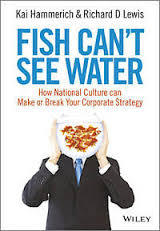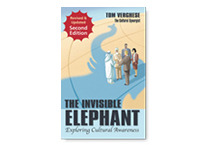
|
| THE CULTURAL SYNERGIST |
|
Over the past few months I have been travelling in and out of Asia frequently. A key topic of discussion with some of my clients has been �the war for talent�, the term coined by McKinsey & Co in 1997. I think that there is a war for talent in the developed countries; but this is not the case for the emerging economies such as Indonesia, India, Vietnam, Malaysia and China. How can there be a lack of talent in these countries, when for example India has more than 65% of its population below the age of 35 and with a population greater than 1.2 billion no less? Indonesia is another example, where nearly half of the total population is under the age of 30. Now, I concur that talent development in emerging market economies is a multi-layered and complex process; but surely these well-populated countries should have an ample pool of potential talent? These markets require a greater focus in terms of how talent is identified and how it is leveraged. Talent programs and succession planning need to be more creative, innovative and holistic in these economies. As emerging economies have experienced rapid expansion they are now coming up against succession planning challenges that are demanding the attention that they deserve. Organisations working in these markets need to take stock and focus on the long-term goals and changing business models by investing in human capital to ensure their competitive advantages. It begins with questions such as:
If you would like to read or follow our Cultural Intelligence Blog go to: http://culturalsynergies.wordpress.com To read our latest discussion paper - The Business Case for Cultural Intelligence go to: http://www.culturalsynergies.com/images/stories/pdf_article/cq%20paperv3.pdf Best Wishes Tom Verghese Send to Friend |
||||
| Leadership Challenges in Emerging Markets |
||||

|
||||
The message
here reads loud and clear - �Culture eats strategy for lunch�. National culture has a powerful, often
invisible impact on the success of global companies and if overlooked will be a
derailer in the growth and success of organisations. So often management is
blind to its own culture that over time the blindness leads to under performance
and failure. |
||||||
RECOMMENDED BOOK: �Fish Can�t See Water: How National Culture Can Make or Break Your Corporate Strategy.� By Kai Hammerich & Richard D. Lewis (2013). |
||||||
 |
||||||
|
|
RESOURCES 'Raising Your Cultural IQ - DVD and CD 'Raising Your Cultural IQ' explores the issues around culture, the challenges that culture can pose and provides some great strategies on how to leverage on cultural differences and similarities. 'The Invisible Elephant - Exploring Cultural Awareness' Book testimonial by Asma Ghabshi Visit our store here
|
|

|
||

|
||

|
||

|
|